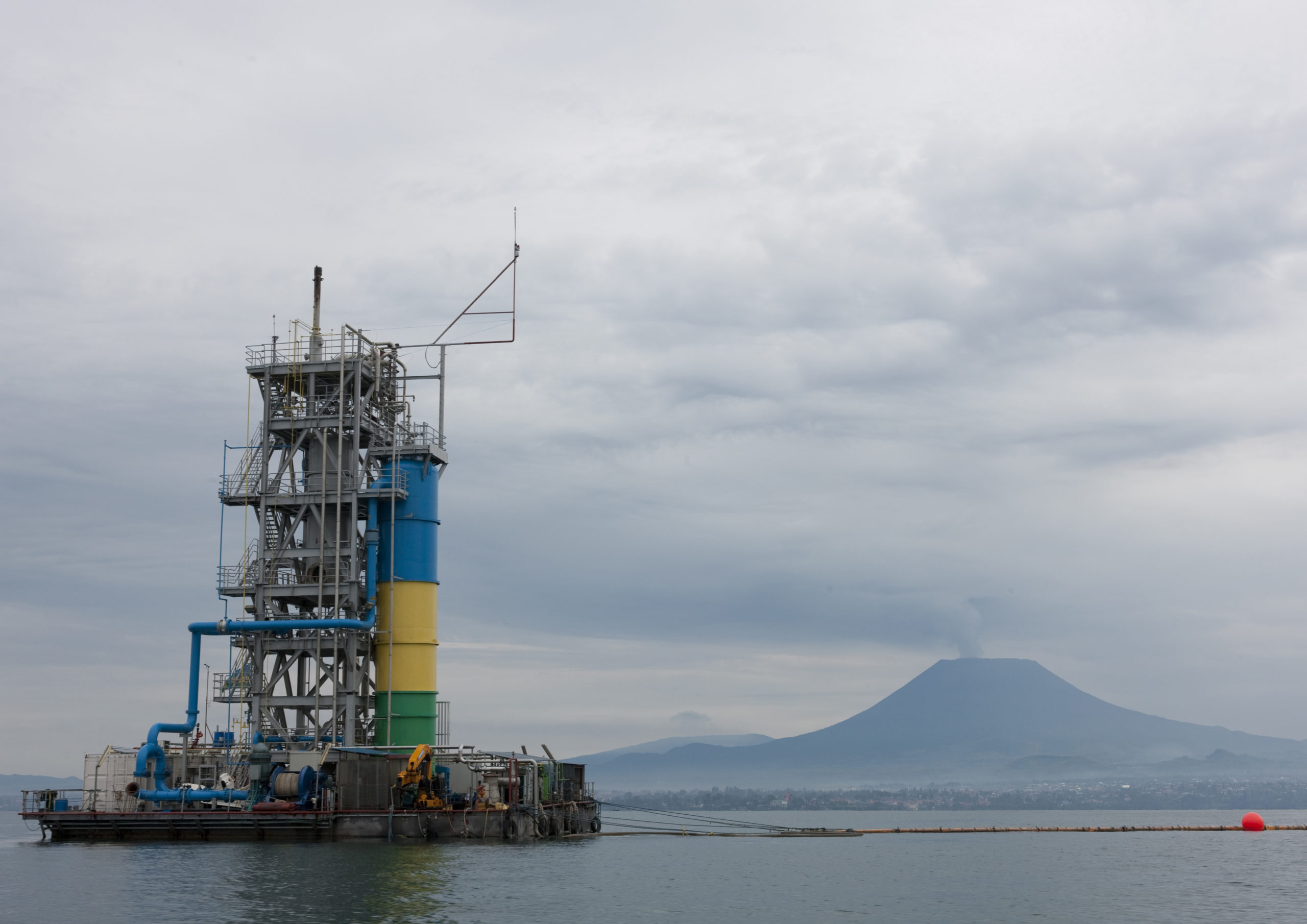Can we harness the Arctic’s methane for energy?
The potent greenhouse gas is abundant in the Arctic. Capturing it for energy could power the region and prevent its release into the atmosphere.

When I first saw Lake Kivu in Rwanda, I was struck not just by its dazzling beauty but also by how little activity there was around its vast expanse. Normally, water bodies like this in Africa would be bustling with boats, fishermen and industrious people on its shores. I later learned why Lake Kivu, one of east Africa’s Great Lakes, is so serene. It is full of methane derived from the volcanic landscape. Methane is a greenhouse gas up to 80 times more potent than carbon dioxide, trapping more heat before decaying into carbon dioxide within a few decades.
Rwanda is a world away from the Arctic. But alternative energy systems there and elsewhere in the world could spark ideas for how methane can be harnessed rather than released into the air.
Methane is the main element in natural gas, and can generate electricity or be used as cooking fuel. In the Arctic, it’s becoming abundant as permafrost thaws and glaciers melt, which accelerates a destructive climate feedback loop. Forty tons of methane leak from Iceland’s Sólheimajökull Glacier every day. Greenland’s Leverett Glacier, releases six tons in the summer. The East Siberian Arctic Shelf off Russia holds 50 gigatons of methane.
Could all that methane be turned into energy? It’s unclear, but there are some striking examples in other parts of the world. In Rwanda, American company Contour Global operates KivuWatt, a 26-megawatt plant at Lake Kivu with potential for 100 megawatts. It is the world’s first lake-based methane power plant. A barge on the lake pumps deep water, extracts methane and pipes it to an onshore power plant. The precious electricity serves Rwanda and neighboring Congo in a region that sorely lacks reliable power. Local energy not only boosts the domestic economy but also reduces reliance on dirty imported fossil fuels.
Besides large power plants, there are also smaller methane energy systems, such as a Kenyan slaughterhouse where biogas animal waste is captured in canisters and sold as cooking fuel. In Rwanda, boarding schools and all prisons have biogas toilets whose methane replaces previously enormous amounts of wood used as cooking fuel.
For decades, landfills in the U.S. have captured methane — essentially biogas from rotting organic waste. They are the third-largest source of human-related methane emissions in the country. Out of 1,900 landfills in the US, about 560 of them piped methane to power plants for electricity. The Environmental Protection Agency acknowledged that landfill gas “generates revenue and create jobs in the community and beyond.”.
However, market forces have derailed wider use. As natural gas becomes cheaper, some landfill methane plants have recently closed. In 2019, Exelon shut the country’s third-largest facility, located in New Jersey and in operation for 20 years. Now methane is wastefully flared and burned even though it could generate electricity.
Market forces have also sidelined promising Arctic research in methane hydrates, which are gas crystals beneath the permafrost. This unexploited energy source is estimated to be larger than all the world’s known coal, oil and gas reserves combined.
Mallik Methane Hydrate Site in Canada’s Beaufort Sea was the first scientific research site for permafrost gas hydrates when it launched in 1998. In 2013, Japanese researchers at Mallik produced methane from offshore hydrates for the first time using new Canadian extraction techniques.
However, that same year, Canada cut $30 million of funding because low natural gas prices made hydrate research financially unattractive. In 2013 Norway, South Korea and India were still doing research. And a German-Taiwanese venture began studying methane resources in the South China Sea.
As the Arctic landscape warms and transforms, methane energy should be further assessed. But there are questions about conditions in the region. How big and stable are various methane sources in different countries? For example, shallow tundra lakes can disappear relatively quickly, unlike enormous ones like Lake Kivu. Can methane be systematically extracted from melting glaciers? What kind of equipment and infrastructure is needed to capture and transport gas over long distances? Could methane spur other sustainable businesses or help underserved communities? What financial resources are needed from governments, banks, and other institutions? Is there a role for multi-lateral agencies? What are the risks of extracting and transporting methane? What about environmental and other risks?
The cost of research and development is small compared to the cataclysmic effects of emitting more and more of this greenhouse gas. Releasing the East Siberian Shelf’s methane reservoir alone would result in $60 trillion worth of human, economic and environmental damage. Harnessing methane’s potential for energy instead is well worth exploring.
Amy Yee is a freelance journalist whose work has appeared in the New York Times and The Economist, among other publications. Find her work at amyyeewrites.com and follow her on Twitter at @amyyeewrites.

The views expressed here are the writer’s and are not necessarily endorsed by the Arctic Initiative or ArcticToday, which welcomes a broad range of viewpoints. To submit a piece for consideration, email commentary (at) arctictoday.com.